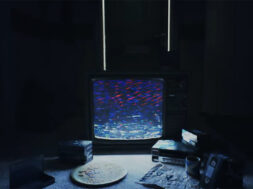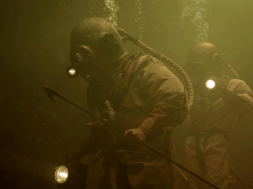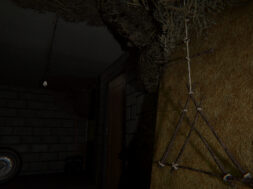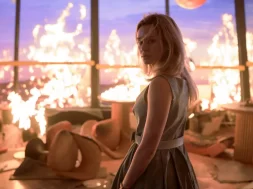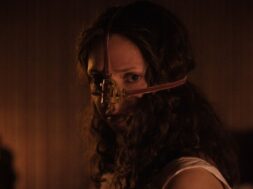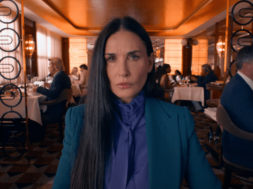This post discusses plot elements from the novel and both film adaptations, so obvious spoilers ahead.
Stephen King’s beloved novel sat in a drawer for years until he reluctantly turned it over to a publisher to fulfill contractual obligations. It was a bleak novel that hit too close to home; King based much of it on his own life and kids, so he felt the novel too terrible to put out there. Not terrible in terms of writing, but terribly dark. But once the novel was finally published, it quickly became a Constant Reader favorite and touted among his scariest works of all time. A story about the Creed family relocating from bustling city life to quiet small town find nothing but tragedy instead, compounded by the supernatural burial ground in their own backyard. It’s themes of grief remain timeless.
The novel received its first adaptation in 1989, and the screenplay was written by King himself. Directed by Mary Lambert, the film delivered a mostly faithful adaptation of the novel with some major exclusions for the sake of pacing and run time. Lambert’s choice to cast Miko Hughes as Gage when the studio wanted twins proved a vital decision that helped usher the film into enduring favorite. As did her choice to cast Andrew Hubastek to play Rachel Creed’s monstrous sister Zelda.
In a new renaissance of King’s works, reinvigorated by 2017’s It, the announcement of a new take on Pet Sematary caused instant bristling for both fans of Lambert’s film and King’s novel. When a trailer revealed that it wouldn’t be Gage coming back from the dead, but his older sister Ellie, well, the outcry was plain. But now that it’s out in theaters, it’s easier to touch on why this new adaptation isn’t rewriting history- the novel and ’89 film still exist, after all. Instead, 2019’s Pet Sematary dives further into the novel than the previous adaptation in certain ways and uses its major changes to support its themes. It also uses the familiarity of both the previous film and novel as a weapon; the more you’re familiar with this story, the more it might surprise you. Here’s a breakdown of the major changes between them:
Jud’s Motivations

In the novel, Jud Crandall lives across the street from the Creed home with his wife Norma. He bonds with Louis early on, and the friendship is solidified when Louis looks after the ailing Norma in a doctor capacity. This debt of gratitude is a big part of why Jud tells Louis about the Micmac burial ground in the first place, as a means of repaying his friend for his kindness. Of course, Jud isn’t immediately aware that his act of kindness is more of an orchestration by the novel’s overarching evil, but still.
In the ’89 film, that evil that serves as the driving force behind everything in the novel is removed entirely. So, Jud’s motivation behind sharing the dark secret of the burial ground is less clear, especially as the film goes on and he recounts horror stories of the undead Timmy Baterman and his own dog. It’s sort of chalked up to a kind old man sharing out of pride and knowledge.
In the 2019 adaptation, it’s Ellie who Jud (now a next door neighbor) forges a bond with from the outset. Even still, as much as he loves her and her cat Church, he takes Louis to the normal Pet Sematary to bury the cat after it dies on the road. It’s not until Louis picks a spot and starts to dig in that Jud hears his name being called from the other side of the deadfall. That beckoning prompts him to stop Louis and take him to the older, evil burial ground instead.
The Wendigo

The Wendigo, explained more in depth here, is the evil spirit that’s been longing to be set free for a very long time. It’s the driving evil that manipulates much of what befalls the Creed family, especially near the end as it actively works to stop Rachel and Jud from intervening with Louis’ reburying of Gage.
The Wendigo doesn’t exist at all in the ’89 film. Not even a mention. It most certainly does in the new adaptation, first with its beckoning of Jud, then with Jud conveying its exposition to Louis via book. It’s lurking in the trees, watching Louis as he brings his deceased daughter Ellie to sour grounds. And its evil is what comes back from her grave- that’s not Ellie, that’s the spirit of the Wendigo. The presence of the Wendigo doesn’t feel quite as large or prominent as the novel, but it’s a pretty good inclusion nonetheless.
Norma Crandall

As previously mentioned, Norma is a big part of fleshing out Jud’s character and his relationship to the Creeds, and her passing away is a contribution to the novel’s exploration of grief and death. But she too is cut from the ’89 film for brevity.
In the 2019 film, she doesn’t appear to fare much better, save for a small scene in which Jud tells Ellie about her while looking at an old photograph. So, at least she gets a mention, right? But Norma does appear. When the Wendigo is toying with Jud just moments before he’s murdered, it takes the appearance of Norma to taunt him and tell him of her time in hell.
Zelda and Rachel Creed

In every iteration of this story, Rachel Creed is haunted by the death of her older sister Zelda. When she was 8, Rachel was forced to act as a caregiver to the suffering Zelda, bedridden and deteriorating from spinal meningitis. As the disease consumed Zelda, she grew more resentful and despised her younger sister’s able body. While left home alone one day, Zelda choked to death, leaving Rachel struggling to cope with the situation. The trauma left Rachel with deep-seated issues about death, a topic she tries to avoid.
In the ’89 film, Zelda is played by a 20-something-year-old man, and provides a major source of the film’s nightmare fuel. In the new adaptation, Zelda is played by a young woman, Alyssa Brooke Levine. This version of Zelda doesn’t taunt Rachel with words in her nightmares, but in the harrowing way she died – falling in the family’s dumb waiter. Both film adaptations present very different takes on Zelda, and both can be very unnerving.

While Rachel remains perpetually terrified of death in the ’89 film and novel, in the 2019 film she’s given a more satisfying arc. There’s a lot more openness in the relationship between Louis and Rachel; he’s well aware of Zelda’s death long before the film opens. There’s a lot less hostility between them as they discuss their opposing viewpoints on death and how to talk about it with Ellie. Thematically, it paints Louis as the pragmatic type who wants to convey death to his daughter as a natural, clinical thing. Rachel wants to shelter her daughter from its grip, and avoid the topic altogether.
Yet, it’s Rachel who proves to be the much more level headed when it comes to death. When their child dies, Louis wails, “Let god take his own fucking kid,” making that fateful choice to resurrect them in the burial ground (a callback to Ellie’s cries for her cat Church in the novel and ’89 film). It’s Rachel who has a better grasp on the death of her child, the one who understands it’s not her child that came back, and the one who makes sure Louis knows not to resurrect her as she lays dying.
In a way, Rachel Creed learned from a young age with her sister Zelda that death can be a gift. She’s the only one who truly understands that sometimes dead is better.
The Death of a Child

In King’s novel, and the ’89 film, it’s toddler Gage that runs out into the road to meet a tragic end by way of Orinco truck. In the novel, the truck driver claims that his foot went down on the gas against his will, another sign of the Wendigo’s overarching grip on this story. In the ’89 film, the truck driver is jamming to the Ramones “Sheena is a Punk Rocker” and overall distracted while driving much, much too fast.
In the new film, the death happens at Ellie’s ninth birthday party (bonus points if you caught the grownups mentioning a rabid St. Bernard at the party table). A bait and switch happens in that both kids are out in the road, but Louis and Rachel only notice Gage as the truck driver (distracted by a text from “Sheena”) is plowing through. His parents get to Gage in the nick of time, but the truck overturns and the trailer skids across the road to kill Ellie instead. It’s a brilliant moment of misdirection that was unfortunately spoiled by the movie trailers. If not for that, you’d be sure it was Gage meeting the same end telegraphed before.

As for the swapping the death of Gage for Ellie, it works well. For one, it means that the ghostly Pascow is trying to warn the Creed family through a toddler too young to effectively understand or communicate. It’s a little more plausible that way, I think. As for Ellie, it feels more apropos of the theme, considering that she is the child at an age where she’s starting to question death itself. Her older age also means something far more sinister for the end.
Jud’s Death

Jud Crandall is murdered by undead Gage in the same way in both the novel and ’89 film. Gage steals a scalpel from a sleeping Louis and slices open Jud’s Achille’s tendon from beneath his bed before doing much, much worse. The 2019 film plays on your knowledge of this scene.
When Jud enters the bedroom, the focus immediately turns to the bed. There’s a lot of empty space beneath for a child underneath, and we know Ellie has a scalpel. But this Jud seems to realize this too, kicking the bed to reveal what might be hiding under. It’s empty. There’s a sigh of relief, as you think you might be spared from that cringe-inducing Achilles severing. That’s when he gets to the top of the staircase to head back down and gets distracted by Church. Ellie reaches through the stairs’ railing and digs in with the scalpel. Brutal.
The Ending

While the ’89 film follows the novel pretty closely, in that Louis is forced to put his resurrected and murderous son Gage down when he finds the bodies of Jud and Rachel. Driven mad with grief, he opts to bury Rachel in the sour ground, and the final moment brings her return and all of its terrifying, grisly implications.
Obviously, the 2019 film scraps all of that entirely for new terrain. When Rachel rejects her undead daughter, Ellie decides to drop all pretense and kill her mother. Louis finally seems to understand the ramifications of his actions and decides to kill his daughter. Too bad for him, the lesson comes too late and his attempts are thwarted by his now undead wife. The final shot of the film is of the resurrected undead family, including undead Church, circling the car that contains the sole living Creed family member left- Gage.
They family came to Ludlow, Maine, for a quieter existence where they could spend more time together as a family. It’s not how they pictured it, but thanks to that evil burial ground, they got it.
How did you feel about this new adaptation? Were you appalled by the changes? Are you a fan of the ’89 film, or the novel? Do you feel there’s space for all three to exist? Sound off below.
